LMT 214-2145 French Valve Radio
s/n 04715
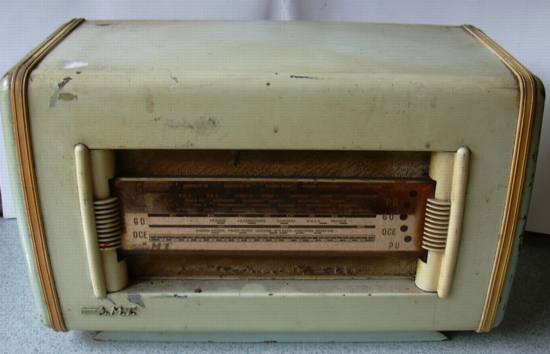
This is a very dirty French radio that I
bought in 2003 from a junk shop in Vernon, Normandy for the princely
sum of 10 Euros. The price was attractive, but the thing that
interested me was that it was housed in a metal cabinet rather than
wood, Bakelite or plastic. It has four wave bands and a pickup input:
OC 15-50m, PO 200-500m, GO
1000-1500m, OCE 10-170m and PU
Gordon
Williams has advised me that 'Le
Grande Livre de la TSF' indicates that LMT radios were made by:
Le Materiel Telephonique
46 Av de Breteuil
Paris 7e
LMT was founded in 1889 and later became part of the ITT group.
Until recently it was a Thomson-CSF company (now Thales).
It gives the Model 214 as the same character as the Model 204
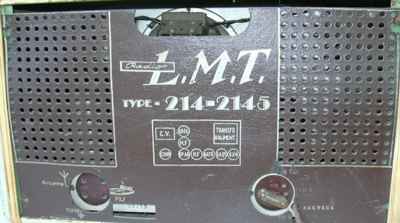
This model was first manufactured in 1951 Valve line up and
placement shown on back cover.
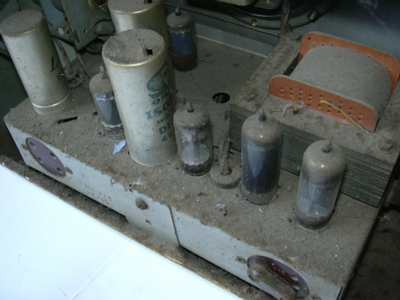
Five valves all miniature 7pin glass based 6BE6, 6BA6, 6AT6, 6AQ5
and 6X4 (Only two appear to be original)
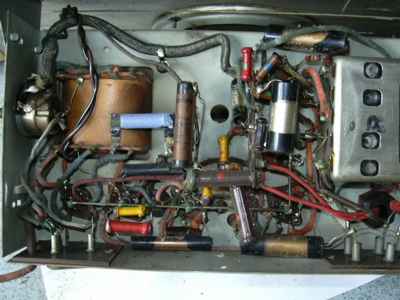
Underside of chassis fairly clean and apparently untouched as
most of the soldered joints have a dab of green paint. The coils and
wave change switch are inside the aluminium box on the right. Note the
glass encased paper capacitors.
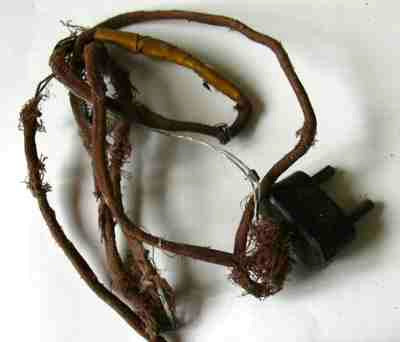
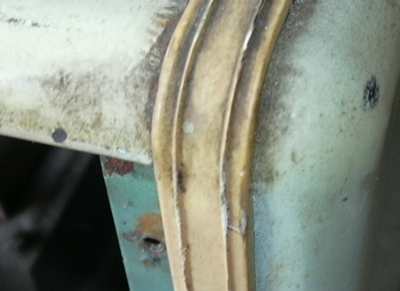
The state of the mains lead indicates that it has not been
energised for a very long time!
The steel cabinet is made in three parts joined together by
lugs which are hidden behind the two soft plastic bands on either side.
The set was originally two shades of green and has at some time been
hand painted cream and light blue.
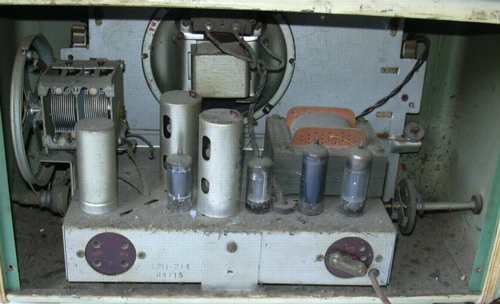
General view of inside prior to cleaning. Wave change and
tuning achieved with one knob on the left and volume on/off control on
the right
The first task was remove all the valves and test the
capacitors and other components prior to energisation. This revealed
that many of the resistors had higher values than their colour codes
would suggest, though working on the maxim that "if it ain't broke
don't fix it" these were left untouched. I then tested the insulation
between the mains transformer and chassis and then gradually applied
250 volts DC from an external supply to the main smoothing capacitors.
All seemed OK so then I plugged the set into the mains and discovered
that both dial lamps were dead.
After replacing these and inserting the valves the set played!
I was in luck, there was nothing seriously wrong, the wave change
switch was noisy but a squirt or two of contact cleaner in the shielded
box fixed that problem. Unlike some British sets such as Pilot and KB
of this period which use the same valve lineup, this set has a fully
isolated mains transformer with earthed screen so I have replaced the
2core mains lead with a 3core one and earthed the chassis.
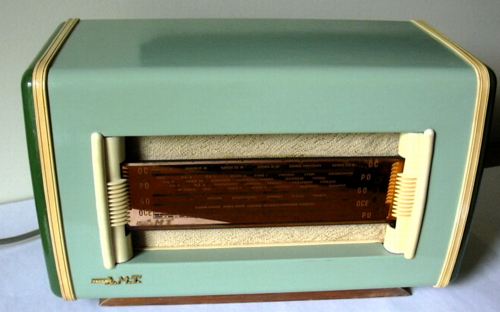
I completely removed all traces of paint from the outside
using paint stripper, abraded the rusty areas with fine emery paper,
primed with red oxide and hand painted it in the original colours. The
smooth finish was achieved by applying two coats of gloss paint and
rubbing down with 400 grade "wet and dry" paper between coats. As the
final appearance seemed too shiny I rubbed this down also and applied
wax polish as a final surface.
The speaker cloth was badly worn and discoloured. Having
learnt the hard way I soaked the cloth for some hours in a biological
detergent and very gently agitated it prior to drying flat on
absorbent kitchen paper. It was then ironed between two layers of
cloth. Fortunately it was large enough to cut across the centre and
reverse so that the discoloured areas are now hidden behind the glass
dial.
Click
here for circuit diagram











